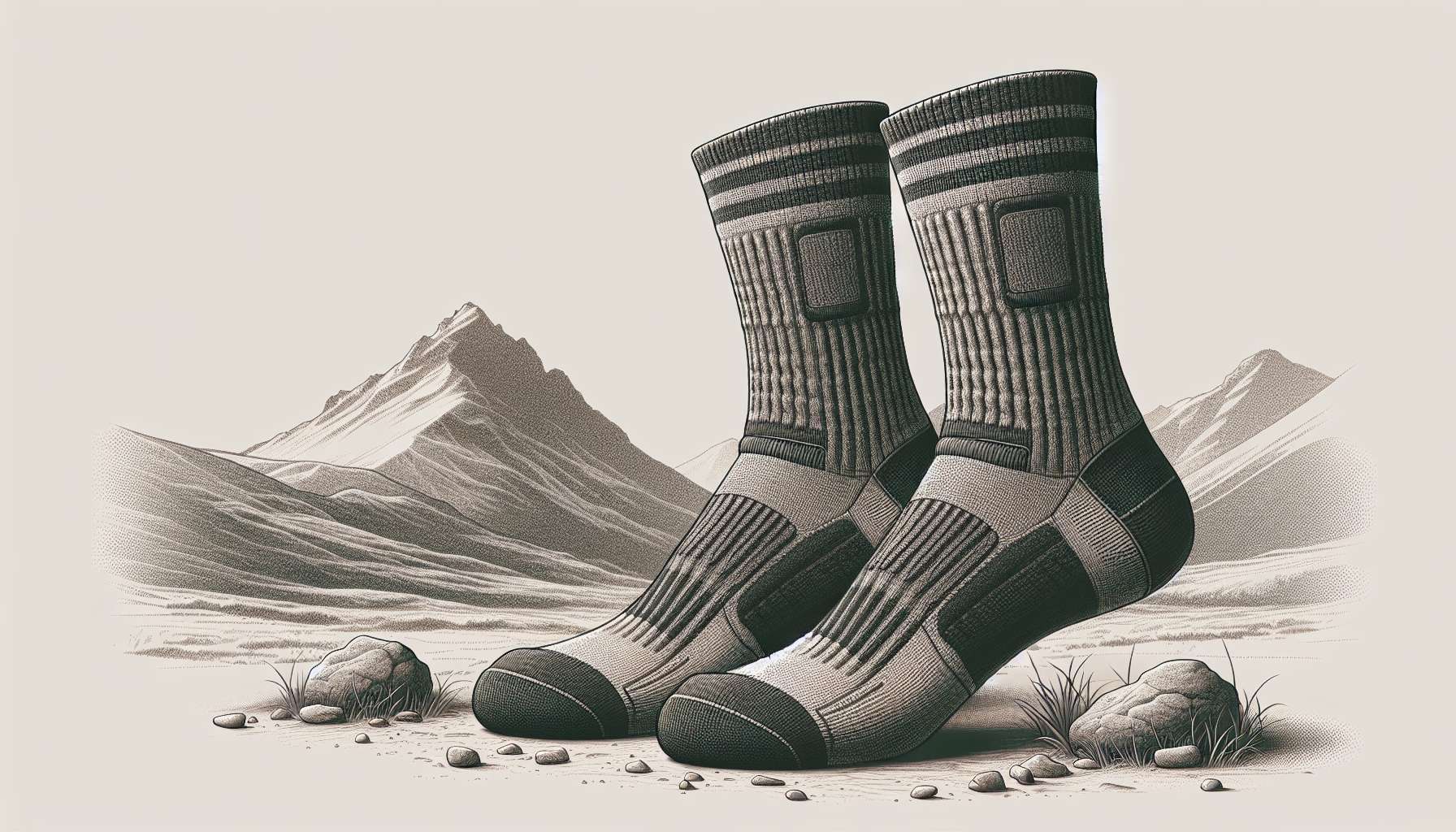The Ultimate Guide to Hiking Socks
Whether you are a novice hiker or an experienced outdoor enthusiast, one of the most crucial pieces of gear you should invest in is hiking socks. Often overlooked, the right pair of hiking socks can make a significant difference in your overall hiking experience. From providing cushioning and support to preventing blisters and keeping your feet dry, hiking socks play a vital role in keeping your feet comfortable and protected on the trails.
In this comprehensive guide, we will delve deep into the world of hiking socks. We will explore the different types of hiking socks, the materials they are made of, how to choose the right pair for your needs, and much more. So, lace up your boots and get ready to embark on a journey to discover the importance of hiking socks.
The Importance of Hiking Socks
When it comes to hiking gear, most people focus on their boots, backpacks, and clothing, often overlooking the importance of investing in high-quality hiking socks. However, hiking socks are a critical component of your hiking ensemble, as they directly impact your comfort and performance on the trails.
One of the primary functions of hiking socks is to provide cushioning and support to your feet, reducing the impact of each step and preventing fatigue. Additionally, hiking socks help to wick moisture away from your skin, keeping your feet dry and preventing blisters.
Furthermore, hiking socks can provide insulation in cold weather and ventilation in hot weather, ensuring that your feet stay at a comfortable temperature throughout your hike. By choosing the right pair of hiking socks, you can minimize the risk of foot injuries, discomfort, and blisters, allowing you to enjoy your time in nature to the fullest.
Types of Hiking Socks
There are several types of hiking socks available on the market, each designed for specific hiking conditions and preferences. Some of the most common types of hiking socks include:
1. Liner Socks
Liner socks are thin, lightweight socks that are worn underneath your primary hiking socks. They are designed to wick moisture away from your skin and reduce friction, helping to prevent blisters. Liner socks are particularly useful for long-distance hikers and those prone to blisters.
2. Midweight Hiking Socks
Midweight hiking socks are the most versatile type of hiking socks and are suitable for a wide range of hiking conditions. They provide cushioning, support, and moisture-wicking properties, making them ideal for day hikes and backpacking trips.
3. Heavyweight Hiking Socks
Heavyweight hiking socks are designed for cold weather and rugged terrain. They offer maximum cushioning and insulation, making them perfect for winter hiking, mountaineering, and backpacking in challenging environments
4. Waterproof Hiking Socks
Waterproof hiking socks are equipped with a waterproof membrane that prevents water from seeping into the sock. They are ideal for hiking in wet conditions, such as rainy weather or crossing streams. Waterproof hiking socks are also breathable, ensuring that your feet stay dry and comfortable.
Materials Used in Hiking Socks
Hiking socks are made from a variety of materials, each offering unique benefits in terms of comfort, durability, and performance. Some of the most common materials used in hiking socks include:
1. Merino Wool
Merino wool is a popular choice for hiking socks due to its natural moisture-wicking and odor-resistant properties. Merino wool socks are soft, breathable, and comfortable, making them an excellent choice for all-season hiking.
2. Synthetic Fibers
Synthetic fibers such as polyester, nylon, and spandex are commonly used in hiking socks for their durability and quick-drying capabilities. Synthetic socks are lightweight, moisture-wicking, and abrasion-resistant, making them ideal for high-intensity activities.
3. Silk
Silk is a luxurious and lightweight material that is often blended with other fibers to enhance comfort and moisture-wicking properties. Silk socks are soft, smooth, and breathable, making them a great choice for warm-weather hiking.
4. Coolmax
Coolmax is a specialized fabric that is designed to wick moisture away from the skin and regulate temperature. Coolmax socks are lightweight, breathable, and quick-drying, making them ideal for hot weather hiking and high-performance activities.
Choosing the Right Hiking Socks
When selecting hiking socks, there are several factors to consider to ensure that you choose the right pair for your needs. Here are some tips to help you find the perfect hiking socks:
1. Consider the Weather and Terrain
Before purchasing hiking socks, think about the weather conditions and terrain you will be hiking in. If you are hiking in hot weather, opt for lightweight, breathable socks. For cold weather hiking, choose heavyweight or insulated socks to keep your feet warm.
2. Think About Your Activity Level
Consider your activity level and the intensity of your hikes when selecting hiking socks. If you are an avid hiker or backpacker, invest in high-performance socks that provide cushioning, support, and moisture-wicking properties. For casual day hikes, midweight hiking socks may suffice.
3. Focus on Fit and Comfort
Ensure that your hiking socks fit well and are comfortable to wear for extended periods. Look for socks with reinforced heels and toes, seamless construction, and arch support to prevent blisters and provide maximum comfort.
4. Pay Attention to Material
Choose hiking socks made from high-quality materials that suit your preferences and hiking conditions. Merino wool socks are a great choice for all-season hiking, while synthetic fibers are ideal for high-performance activities. Consider the moisture-wicking, insulation, and durability properties of the materials used in the socks.
Expert Opinions
We reached out to several outdoor enthusiasts and hiking experts to get their take on the importance of hiking socks. Here is what they had to say:
“Hiking socks are often underestimated in terms of their impact on your overall hiking experience. A good pair of hiking socks can make a world of difference in terms of comfort, support, and blister prevention. Don’t overlook the importance of investing in high-quality hiking socks for your outdoor adventures.” – John, avid hiker
“As a seasoned backpacker, I have learned the hard way that the right pair of hiking socks can make or break a hike. I always prioritize comfort, fit, and moisture-wicking properties when selecting hiking socks, as they directly impact my performance on the trails.” – Sarah, backpacker
Conclusion
To wrap things up, hiking socks are an essential piece of gear that can significantly impact your comfort and performance on the trails. By choosing the right pair of hiking socks based on your hiking conditions, activity level, and personal preferences, you can ensure that your feet stay dry, comfortable, and blister-free throughout your adventures in nature.
Remember to consider factors such as weather, terrain, fit, and material when selecting hiking socks, and don’t underestimate the importance of investing in high-quality socks for your outdoor pursuits. Your feet will thank you, and you will be able to fully enjoy the beauty of the great outdoors without any foot-related discomfort or injuries.
So, the next time you head out on a hike, make sure you have the perfect pair of hiking socks to accompany you on your journey. Happy trails!




